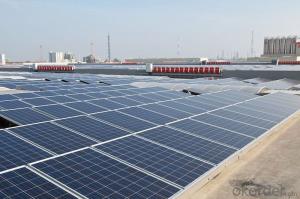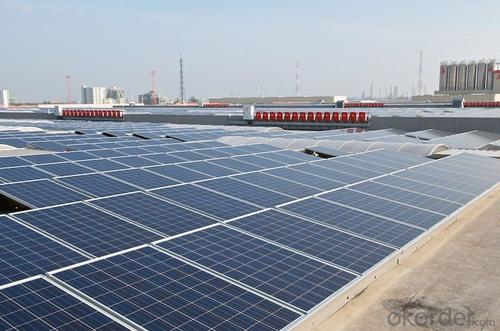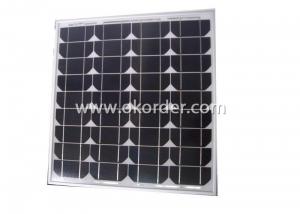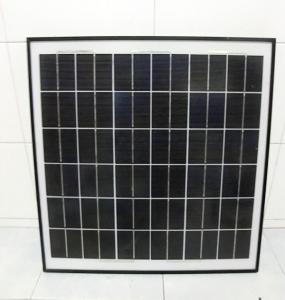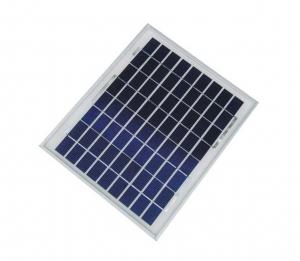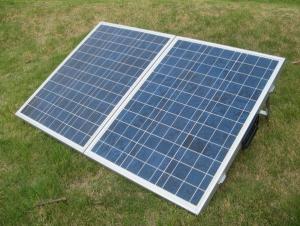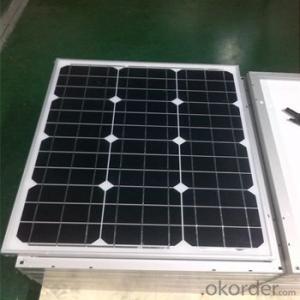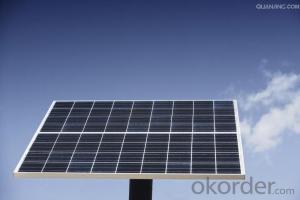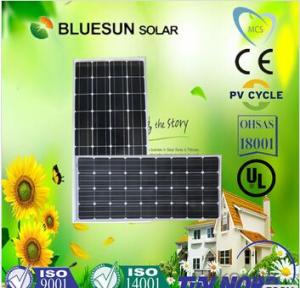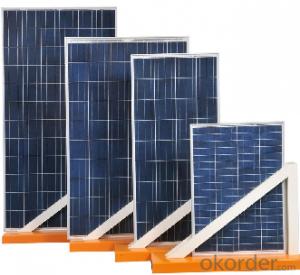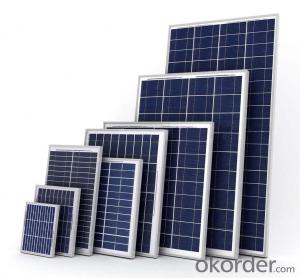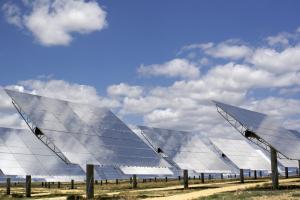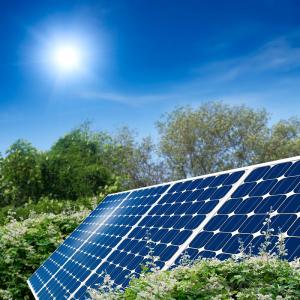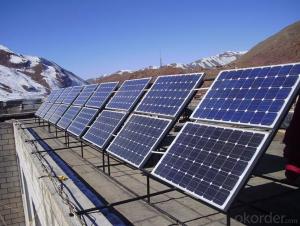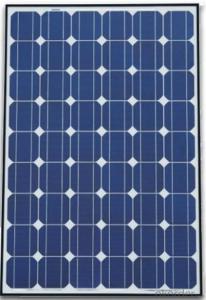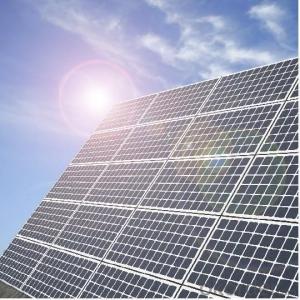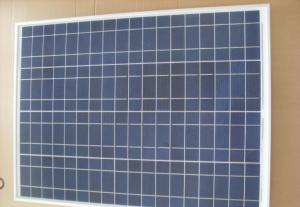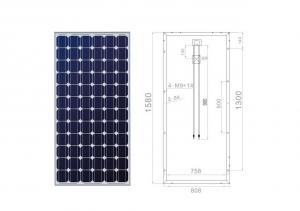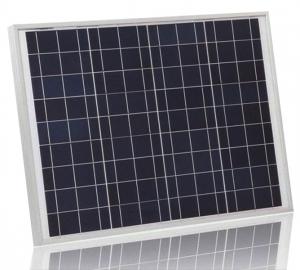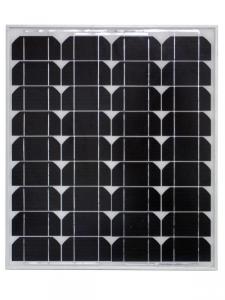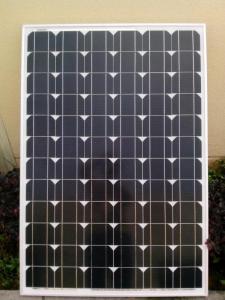Solar Panels Alaska - Polycrystalline Solar Panel 235W with High Quality
- Loading Port:
- Shanghai
- Payment Terms:
- TT OR LC
- Min Order Qty:
- 100 watt
- Supply Capability:
- 10000 watt/month
OKorder Service Pledge
OKorder Financial Service
You Might Also Like
Specification
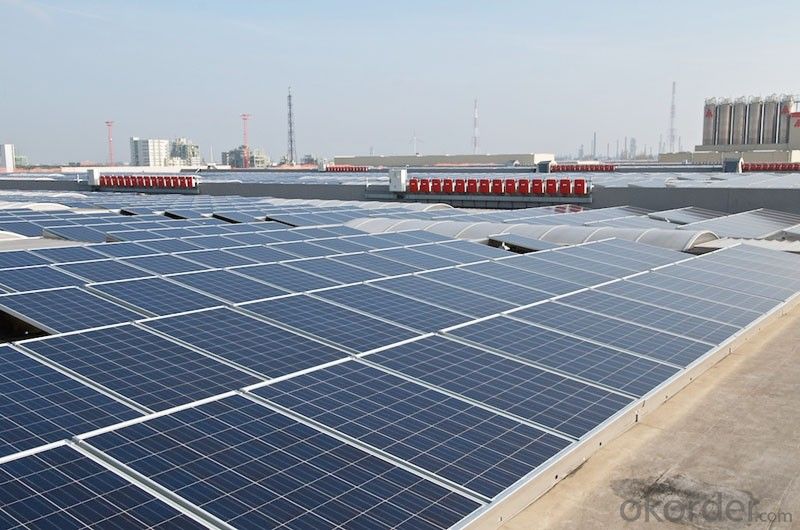
Product Description
235W Poly Crystalline Solar Panel
Product Highlights:
1. Guarantee positive power tolerance (0~+3%)
2. Module can bear snow loads up to 5400Pa and wind loads up to 2400pa
3. High performance under low light conditions (cloudy days, mornings and evenings)
4. Certified by Europe standards of TUV, IEC, CE and British MCS and AUS CEC
5. OEM/ODM available
Specs
| Electrical Characteristics | |
| Maximum Power [Pmax] | 235W |
| Power Tolerance | +/-3% |
| Maximum Power Voltage [Vmp] | 29.5V |
| Maximum Power Current [Imp] | 7.97A |
| Short-Circuit Current [Isc] | 8.59A |
| Open-Circuit Voltage [Voc] | 36.9V |
| Module Efficiency | 14.44% |
| Max. System Voltage | 1000VDC |
| Cell Size and Series | Poly 156*156 60pcs (6*10) |
| Temperature Coefficient of Pmax | - 0.47% / º C |
| Temperature Coefficient of Voc | - 0.33% / º C |
| Temperature Coefficient of Isc | 0.05% / º C |
| Mechanical Characteristics | |
| Dimension (mm) | 1640*992*40 |
| Frame | Anodized Aluminium Alloy |
| Glass | 3.2mm,High Transmission,Tempered Glass |
| Junction box & Cable | IP65 Rated weatherproof connectors Cable: TUV 1x4.0mm2 / UL12AWG,Length:900mm |
| Weight | 19.0Kgs |
Industry-leading Warranty:
Warranty on material and workmanship: 10 years
Guaranteed output of 90% after 12 years and 80% after 25 years.
- Q: what is a solar panel?
- A solar panel is essentially a battery charger that transforms sunlight into an electrical DC (direct current)charge.
- Q: Can solar panels be used in areas with high pollution?
- Yes, solar panels can still be used in areas with high pollution. While pollution can reduce their efficiency to some extent, solar panels can still generate electricity even in polluted areas. However, it is important to note that excessive pollution may result in a decrease in their overall performance and require more frequent maintenance to keep them clean and functioning optimally.
- Q: How do solar panels affect the resale value of a home?
- Solar panels can have a positive impact on the resale value of a home. Studies have shown that properties with solar panels tend to sell faster and at a higher price compared to homes without them. Potential buyers view solar panels as a valuable and eco-friendly feature, leading to increased buyer interest and willingness to pay a premium for a home equipped with solar power.
- Q: Can solar panels be installed in rural areas?
- Yes, solar panels can be installed in rural areas. In fact, rural areas are often ideal for solar panel installations due to the availability of open spaces and ample sunlight. Installing solar panels in rural areas can provide clean and renewable energy to these communities, reducing their dependence on traditional energy sources and improving energy access.
- Q: I have an electric bicycle that I travel to work by, pulling a modified child carrying trailer that holds two 2 volt deep cycle batteries in series to power the 24 volt bike motor. I'm thinking about adding a 50 watt solar panel (or larger depending on the room I can make available) to charge while I'm at work and to provide some extra juice while on my more distant travels.Can I get a solar panel to charge them while they're connected the way they are: in series? Does charging work that way?I've read that in order to charge the 24 volt battery setup (if the answer to the Q above is yes), the output from my solar panel would need to be a little more than 24 volts. Is this true? If so, how many volts?Since the bike is supposed to be powered at 24 volts and I have an x-volt (x gt; 24v) solar panel connected to it, will this cause any damage to the controller or other components while running them?Will it help supply power even while the motor is being run?Thanks.
- The important part of the long answer is the charge controller - those batteries cost way too much to cook them out. And the controller maker will specify how much voltage your panels need to supply (more than 24 certainly) to provide a charge for several hours a day so you aren't wasting money on something that actually does very little. I also hope you have a very secure location to store this rig at work because while a bike with a tow trailer is easy to disguise and awkward to move, as soon as you put a solar panel on it, it becomes a very obvious theft target and maybe a vandalism target. And since you want to charge at work, it has to be outside. And since for effective use the panel has to mostly face the sun but you don't want to drag it broadside through the air while riding, you will have to either work out a pivoting mount or angle the whole trailer to the general position of the sun when parked and have the panel flat on top. I personally would probably redesign so that at work the trailer pulled up along side the bike and was chained/locked to it to make a really awkward mass that had the panel bolted through the lid with blind bolts.
- Q: Can solar panels be used in conjunction with a backup generator?
- Yes, solar panels can be used in conjunction with a backup generator. This setup is known as a hybrid system. During periods of sunlight, solar panels generate electricity and can power a home or facility. Any excess energy can be stored in batteries or fed back into the grid. When sunlight is insufficient, a backup generator can automatically kick in to provide electricity, ensuring a continuous power supply.
- Q: Installing solar panels requires a big initial investment. Before I make this investment I want to check to see if the money I will save by installing solar panels will actually pay for this investment, in the long run. To calculate my savings, we should consider the area (square feet) I currently have available to install solar panels. Look at the available sunlight and its intensity in my state each month of the year. Based on this data estimate how much energy my solar panel will generate. Then compare that with how much energy (kWh) I currently consume based on my electricity bill.
- Your school spend $0,000 per month or per year?? Photovoltaic (Solar Panel) panels have a really large initial capital investment. If you live in a location (e.g. West Coast Desert, SoCal) where there are many sunny days so you might be able to break even quicker. Also note ,there are state and federal grants that can help ease the capital cost. Energy demand keeps going up so expect our current rates to double. People who have alternative forms like wind and solar will have the advantage when this time comes. Just think of when the US had it's oil crisis in summer of 2008, people with small efficient vehicles such as Prius's didn't feel the price increase like the people who bought cheaper large SUV's.
- Q: Can solar panels be installed on backpacks or camping gear?
- Yes, solar panels can be installed on backpacks or camping gear. These portable solar panels are designed to be lightweight and flexible, making them ideal for outdoor activities. They can capture solar energy and convert it into usable electricity to charge devices such as phones, cameras, or portable batteries while on the go.
- Q: Im doing this project on Solar panels and im not so sure what they are!some questions i have are who invented them and what were they invented? If u could know anything on Solar Panels i would love to hear it. Thanks!!!!!!!!!!!!!!!!!!!!!
- Solar Panels are collections of solar cells. These panels basically collect the incoming sun's electromagnetic radiation and convert it into electrical energy. A solar cell is any device that directly converts the energy in light into electrical energy through the process of photovoltaics. The development of solar cell technology begins with the 839 research of French physicist Antoine-César Becquerel. Becquerel observed the photovoltaic effect while experimenting with a solid electrode in an electrolyte solution when he saw a voltage develop when light fell upon the electrode.
- Q: How much roof space is needed for solar panels?
- The amount of roof space needed for solar panels varies depending on several factors such as the size and type of panels, the energy requirements of the property, and the efficiency of the panels. However, as a general rule of thumb, a typical 1 kW solar panel system requires around 100 square feet of roof space.
Send your message to us
Solar Panels Alaska - Polycrystalline Solar Panel 235W with High Quality
- Loading Port:
- Shanghai
- Payment Terms:
- TT OR LC
- Min Order Qty:
- 100 watt
- Supply Capability:
- 10000 watt/month
OKorder Service Pledge
OKorder Financial Service
Similar products
Hot products
Hot Searches
Related keywords
